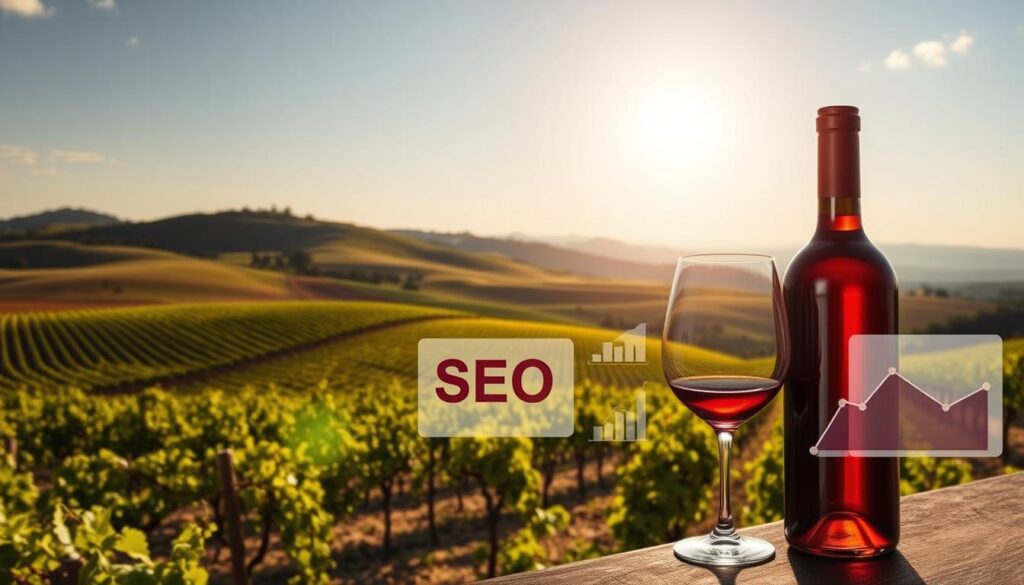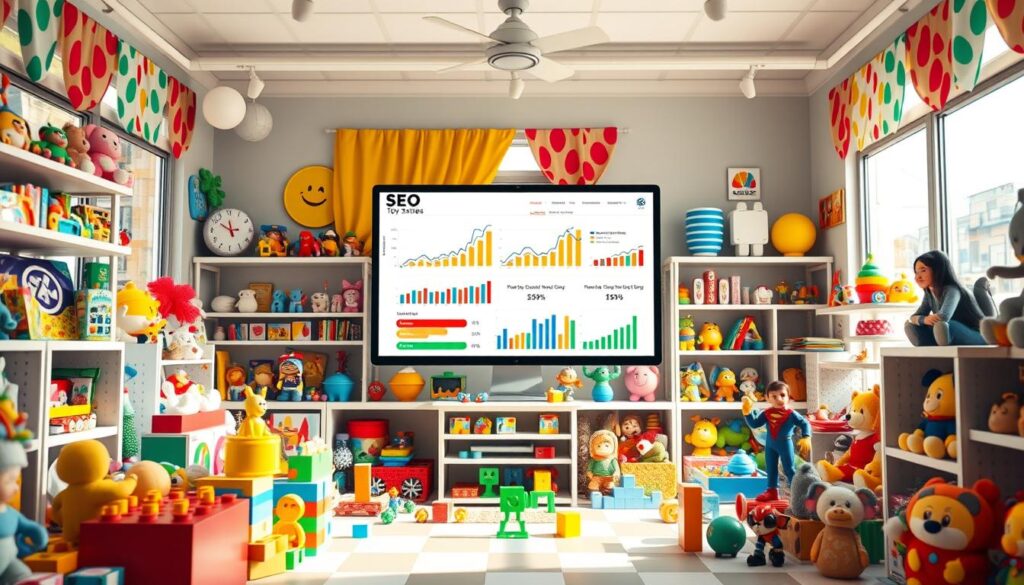SEO for learning centers might sound like a bunch of techy mumbo jumbo, but it’s really just about making sure people can find you online. Think of it like putting up a big, bright sign on a busy street. If you run a learning center, you want parents and students to easily find your services when they search online. It’s not just about getting more clicks; it’s about connecting with the folks who need your help the most. So, let’s break down what SEO means for learning centers and how you can use it to your advantage.
Key Takeaways
- SEO helps learning centers get noticed online, making it easier for students and parents to find you.
- Using the right keywords is key. Think about what your audience is searching for and use those words on your site.
- Local SEO is super important. Make sure your learning center shows up in local searches by using your city or town in keywords.
- Content is king! Regularly update your site with helpful, engaging content to keep folks coming back.
- Don’t forget about backlinks. Having other reputable sites link to yours boosts your credibility and search ranking.
Understanding SEO for Learning Centers

Defining SEO in Education
Search Engine Optimization (SEO) is all about making your website more visible to people who are using search engines like Google. For learning centers, this means tailoring your site so it pops up when prospective students or parents are searching for educational services. It’s not just about getting more clicks; it’s about attracting the right audience—those who are genuinely interested in what your center offers.
Importance of SEO for Learning Centers
In today’s digital age, having a strong online presence is crucial for any learning center. A well-executed SEO strategy can significantly increase your center’s visibility, making it easier for potential students to find you. This is especially important in a competitive market where parents and students have numerous options. By optimizing your website, you can ensure that your learning center stands out from the crowd.
Common SEO Misconceptions
There are several myths surrounding SEO that can lead to confusion. One common misconception is that SEO is a one-time effort. In reality, it’s an ongoing process that requires regular updates and adjustments. Another myth is that SEO is all about keywords. While keywords are important, they’re just one part of a broader strategy that includes content quality, user experience, and technical aspects. Lastly, some believe that SEO guarantees instant results. Patience is key; it often takes time to see the fruits of your SEO efforts.
SEO isn’t just a technical task; it’s a vital part of your learning center’s marketing strategy. By understanding and overcoming misconceptions, you can better position your center for success in the digital landscape.
By focusing on SEO, learning centers can improve their online presence and reach a wider audience, ultimately attracting more students and enhancing their educational impact.
Key Components of SEO Strategy
Keyword Research Techniques
Keyword research is the backbone of any SEO strategy. It’s about understanding what terms your audience is using to find learning centers like yours. Start by brainstorming a list of potential keywords. Use tools like Moz Keyword Planner to check their search volume and relevance. Effective keyword research helps you tap into the language of your audience, making your content more discoverable. Consider both short-tail and long-tail keywords to cover a wide range of search intents.
On-Page SEO Best Practices
On-page SEO involves optimizing individual pages to rank higher and earn more relevant traffic. This includes using keywords naturally throughout your content, optimizing title tags and meta descriptions, and ensuring your site is mobile-friendly. Don’t forget about image alt texts and internal linking. These elements help search engines understand your content better and improve user experience.
Off-Page SEO Essentials
Off-page SEO focuses on actions taken outside your website to impact your rankings within search engine results pages. This often involves building backlinks from reputable sites, which can be seen as votes of confidence for your content. Social media marketing and guest blogging are also effective strategies. Remember, the goal is to show search engines that your content is valuable and credible.
A well-rounded SEO strategy is not just about optimizing your website, but also about building relationships and authority across the web. By focusing on both on-page and off-page elements, you can create a robust SEO strategy that boosts your learning center’s visibility and attracts more students.
For a deeper dive into these components, consider SEO consists of key components that enhance online visibility and guide potential customers to your business.
Local SEO Strategies for Learning Centers

Optimizing Google My Business
To boost your learning center’s presence in local searches, setting up a Google My Business profile is a must. It’s not just about claiming your listing; make sure you fill in every detail—hours, location, contact info, and even images of your facility. Listings with plenty of images tend to get more clicks. This step helps your center pop up when people search for educational services in your area.
Encouraging Customer Reviews
Getting reviews from parents and students can really push your learning center up in local search results. Positive reviews not only build trust but also improve your search rankings. Encourage satisfied customers to share their experiences online. A simple follow-up email after a successful session can prompt them to leave a review. Remember, every review counts!
Local Keyword Targeting
When it comes to local SEO, keywords are your best friend. Use location-specific phrases in your content to attract local families. For instance, "top learning center in [Your City]" can help draw in the right crowd. Make sure these keywords are naturally integrated into your website’s content, meta descriptions, and even blog posts. This way, when someone searches for educational services in your area, your center stands a better chance of being noticed.
Local SEO enhances a school’s online visibility, helping it rank higher in local search results. This strategy focuses on attracting potential families by optimizing the school’s website and online presence.
By focusing on these strategies, your learning center can effectively improve its local search presence and draw in more students. It’s not just about being seen; it’s about being found by the right people.
Content Creation for SEO Success
Creating content that not only informs but also boosts your SEO is a balancing act. When you’re crafting content for learning centers, the main goal is to make it engaging and useful while also making sure it ranks well on search engines. Here’s how you can do it:
Creating Engaging Educational Content
Educational content should be more than just informative; it should be engaging. Think about what your audience wants to learn and how they prefer to consume information. Content that sparks curiosity and encourages interaction can significantly enhance user engagement. Consider using storytelling techniques or presenting real-world applications of the concepts you’re teaching. This approach can make your content more relatable and memorable.
Utilizing Visual Media
Visuals are a powerful tool in education. Incorporating videos, infographics, and images can make complex information more digestible. Visual media not only breaks up large chunks of text but also caters to visual learners who might struggle with text-heavy content. To optimize visual content for SEO, remember to add alt text to images and transcripts to videos. This not only improves accessibility but also provides search engines with more context about your content.
Blogging for Learning Centers
Blogging is a fantastic way to keep your website fresh and relevant. Regular blog posts can address common questions, share insights, and offer tips related to your field. When blogging, focus on topics that are both relevant to your audience and aligned with your SEO strategy. Use keywords naturally within your content, and avoid overstuffing them. A good blog not only informs but also encourages readers to explore more of your site, increasing their time on page and reducing bounce rates.
"Creating content isn’t just about filling up space on your website; it’s about connecting with your audience and providing them with the value they seek."
By focusing on these strategies, learning centers can create content that not only attracts visitors but also keeps them coming back for more. This approach not only supports educational goals but also enhances your site’s SEO performance.
Monitoring and Analyzing SEO Performance
Using SEO Tools Effectively
When it comes to understanding how well your learning center’s website is doing, using the right tools is key. Tools like Google Analytics and SEMrush are great for tracking various metrics. They help you see how much traffic you’re getting and where it’s coming from. You can also track which keywords are bringing people to your site. This kind of data is super important because it tells you what’s working and what needs a bit of tweaking. You’ll want to use these tools regularly to keep on top of things.
Tracking Keyword Rankings
Keeping an eye on your keyword rankings is another big part of SEO. It’s all about knowing where your website stands in search results for specific terms. For instance, if you’re targeting "best learning center," you’ll want to see how high up your site appears when someone searches that phrase. By using a rank tracker, you can monitor changes over time. This way, you can adjust your strategy if you notice any drops or improvements. Consistent tracking helps you stay competitive and makes sure you’re reaching the right audience.
Assessing Website Traffic
Understanding your website traffic is like getting a health check-up for your site. You’ll want to look at how many visitors you’re getting, how long they stay, and what pages they visit. This information can show you what content is engaging and what might need some work. If you notice a high bounce rate, it might mean your site’s not meeting visitors’ needs. Regularly checking your traffic stats helps you make informed decisions about your content and marketing strategies.
SEO isn’t a one-time deal. It’s an ongoing process of tweaking and improving to keep your site performing its best. By continually monitoring these aspects, you can ensure your learning center stays visible and attracts the right crowd.
Building a Strong Backlink Profile
Importance of Backlinks
Backlinks are like votes of confidence from other websites. When a reputable site links to your content, it tells search engines that your site is trustworthy and worth visiting. For learning centers, having a robust backlink profile can significantly improve search engine rankings, making it easier for potential students to find you. Backlinks are crucial for boosting your site’s credibility and visibility.
Strategies for Acquiring Backlinks
Building a solid backlink profile requires a strategic approach. Here are some effective ways to get started:
- Create Quality Content: Produce engaging and informative content that others in your field will want to share. This could be blog posts, research findings, or educational resources.
- Guest Blogging: Reach out to educational blogs and websites to contribute guest posts. This not only helps in gaining backlinks but also expands your reach.
- Collaborate with Other Educators: Partner with schools or educational platforms for joint projects or webinars. Such collaborations often lead to natural backlink opportunities.
Remember, the key is to employ diverse link-building tactics and avoid shortcuts like buying links, which can harm your site’s reputation.
Monitoring Backlink Health
Keeping an eye on your backlinks is essential. Use tools to track your backlinks and ensure they remain active and relevant. If you notice any broken or toxic links, take immediate action to disavow or replace them. Regular monitoring helps maintain a healthy backlink profile, which is vital for sustaining your online reputation and search engine rankings.
Maintaining a strong backlink profile is not just about acquiring new links but also about nurturing the ones you already have. Regular checks and updates ensure your learning center stays at the top of search results.
Leveraging Social Media for SEO
Integrating Social Media with SEO
Social media is more than just a platform for sharing photos and updates. It’s a powerful tool that can boost your SEO efforts. When you share content on social media, it increases the chances of more people seeing it, which can lead to more traffic to your website. Sharing quality content on social media can amplify your reach and improve your search engine rankings. Make sure your social media profiles are complete and link back to your website. This not only helps in driving traffic but also signals to search engines that your site is credible and connected.
Engaging Your Audience Online
Engagement is key on social media. The more you interact with your audience, the more likely they are to share your content. Respond to comments, ask questions, and create polls to encourage interaction. This not only helps in building a community but also increases the visibility of your content. Social platforms reward engagement, which can indirectly boost your SEO by increasing your content’s reach.
Promoting Content Through Social Channels
Once you have engaging content, it’s time to share it on social media. Use platforms like Facebook, Twitter, and LinkedIn to promote your blog posts, videos, and other content. Create a schedule to consistently share your content across different platforms. This regularity helps keep your audience engaged and your content fresh in their minds. Remember, the more your content is shared, the more authority your site gains, potentially improving your search rankings.
Social media isn’t just about likes and shares; it’s a way to create a network of connections that can enhance your SEO. By integrating social media strategies with your SEO efforts, you create a comprehensive approach that can lead to greater online visibility and engagement.
For schools looking to improve their online presence, integrating School SEO services can be a game-changer. These services not only optimize your website but also use social media strategies to connect with prospective students and families.
Conclusion
So, there you have it. SEO isn’t just some fancy tech term; it’s a real game-changer for learning centers. By getting your online presence in shape, you’re not just reaching more students, but you’re also building a solid reputation in the education world. It’s like setting up a big, bright sign that says, "Hey, we’re here, and we’re awesome!" Whether it’s using the right keywords, keeping your website in top form, or making sure you’re visible in local searches, every little bit helps. Dive into SEO, and watch your learning center grow. It’s not just about being found; it’s about being chosen.
Frequently Asked Questions
What is SEO and why is it important for learning centers?
SEO, or Search Engine Optimization, is a way to make your learning center’s website more visible on search engines like Google. It’s important because it helps attract more students by making it easier for them to find your center online.
How can I find the right keywords for my learning center?
Finding the right keywords involves thinking about what students and parents might search for. Tools like keyword finders can help you discover popular terms related to your services, like “math tutoring” or “reading help for kids.”
What are backlinks and why do they matter?
Backlinks are links from other websites to your site. They matter because they show search engines that your site is trustworthy and popular, which can help improve your search ranking.
How can I improve my learning center’s local SEO?
To boost local SEO, make sure your center is listed on Google My Business, encourage positive reviews from parents and students, and use local keywords like your city or neighborhood in your content.
Why is content creation important for SEO?
Creating engaging and helpful content, like blog posts or videos, attracts visitors to your site. Good content keeps people interested and encourages them to share it, which can improve your site’s visibility on search engines.
How can social media help with SEO?
Social media helps by driving traffic to your website. Sharing your content on platforms like Facebook or Instagram can reach more people, and engaging with your audience can boost your online presence.






